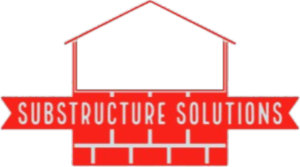
What You Need to Know About Structural Changes in Underground Spaces
Share
Making structural changes to underground spaces can open up all sorts of possibilities for your home, but it’s not as simple as knocking down a wall or digging out a new room. These types of renovations come with unique challenges that need careful planning, professional input, and the right techniques to make them safe and lasting.
What is a Structural Remodel?
So, what is a structural remodel? It involves altering the core framework of a property. This could mean removing or relocating load-bearing walls, reinforcing foundations, lowering floor levels, or adding entirely new sections to the underground layout. It’s much more complex than cosmetic changes, and in underground areas, it’s even more critical to get it right.
If you’re planning to build an underground safe room or convert a basement into something more functional, you’ll likely need to make structural modifications to support the change in layout and use.
Why Underground Spaces Are Different
Making changes below ground level comes with a specific set of challenges. These include soil pressure, moisture control, access, ventilation, and load distribution. Any adjustment to walls or support systems can affect the integrity of your home above. That’s why structural changes in underground areas require specialist knowledge and careful engineering.
If you’re considering digging out a basement, you'll also need to think about local council rules, neighbouring structures, and drainage requirements. It’s not just about creating space, but making sure that space is stable, compliant, and fit for long-term use.
Common Types of Underground Structural Modifications
Here are some examples of underground structural changes:
- Lowering the basement floor to increase head height
- Removing or relocating internal support walls
- Strengthening foundations through underpinning
- Adding a separate entrance or exit to the space
- Installing new retaining walls or support beams
Each of these changes will require a structural engineer to assess the existing conditions and recommend the right approach.
What is Remodelling in Construction Terms?
Now, you may be thinking: what is remodelling in construction? It refers to updating, changing, or expanding the structure of a building. It’s often used interchangeably with renovation, but the key difference is that remodelling typically involves structural changes. This is especially true when converting a basement into an underground safe room that serves as a living area, workspace, or secure bunker.
It’s important to understand that even small tweaks in an underground area can have a bigger impact than expected. For example, shifting a wall to make space for a bathroom might require reinforcing nearby footings or adjusting plumbing and ventilation routes.

Signs You Might Need Structural Modifications
Not all projects start with a big idea. Sometimes the need for structural change becomes obvious over time. Here are some common signs:
- Cracked walls or floors
- Uneven or sloping flooring
- Water leaks or damp spots
- Sagging ceilings or door frames that won’t close properly
These issues often indicate deeper foundation problems. In this case, your best bet is to speak with professionals who understand how to build an underground room and can identify what’s really going on beneath the surface.
Understanding Structural Modification at Home
Structural modification at home might sound overwhelming, but it’s simply about improving the bones of your property to make it safer or more functional. Whether you’re expanding a basement, creating a private workspace, or building a retreat that’s both safe and practical, changes to the structure must be handled with precision.
Working underground requires more planning than above-ground renovations. Soil stability, waterproofing, and load calculations all come into play. If you’re unsure about where to begin, getting expert advice early can help set your project on the right path.
Safety, Compliance and Permits
You can’t make major structural changes underground without the right permits. Any project involving structural walls, foundations, or excavation will need approval from your local council. You’ll likely need architectural drawings, engineering plans, and a construction certificate. Failing to follow this process can lead to costly delays or even safety risks.
It’s also important to make sure all work is compliant with Australian building codes and waterproofing standards. Engaging an experienced contractor who specialises in basement and underground construction will help you tick all the boxes from the start.
Work With a Specialist Today
Structural remodelling in underground spaces is not the place to cut corners. Every mistake underground can impact the structure above. Substructure Solutions has over a decade of experience working with clients across NSW to carry out complex builds safely and efficiently. From excavation to wall removal and underpinning, we know how to work with challenging conditions and local compliance requirements.
Thinking about making changes underground? Reach out to Substructure Solutions for tailored advice and a free initial consultation.
